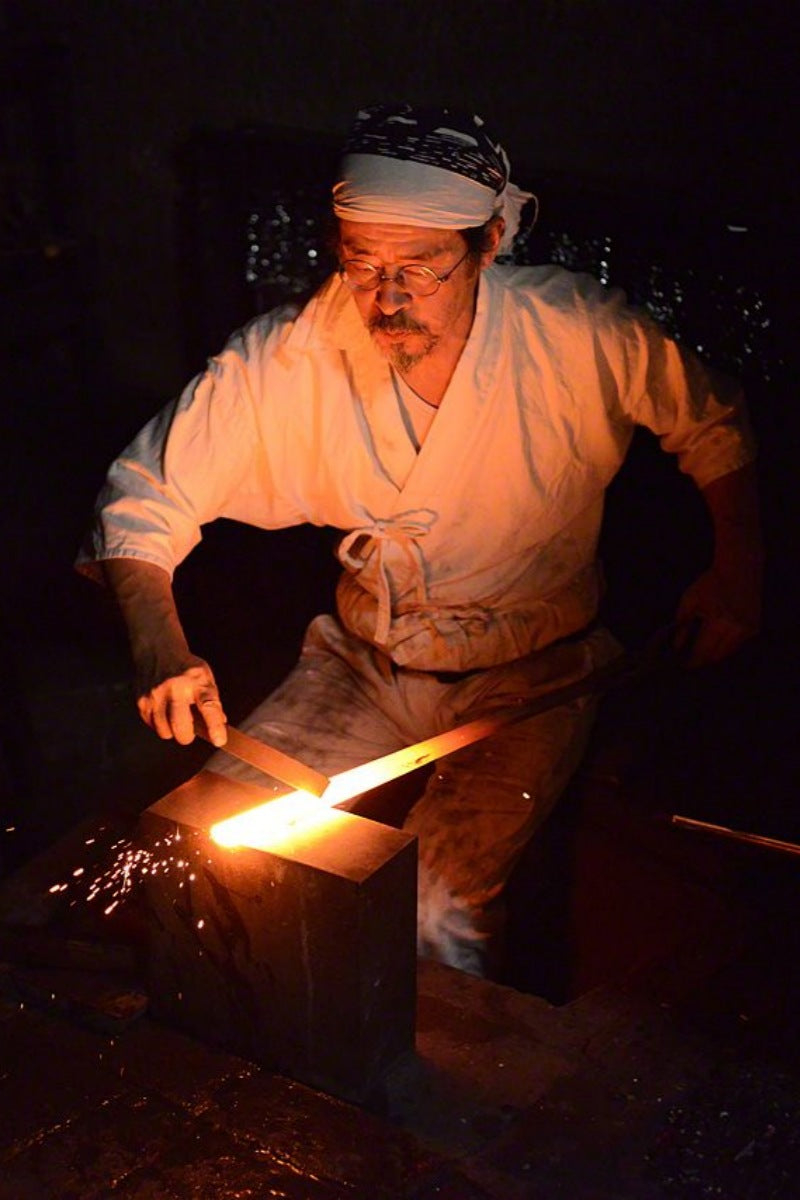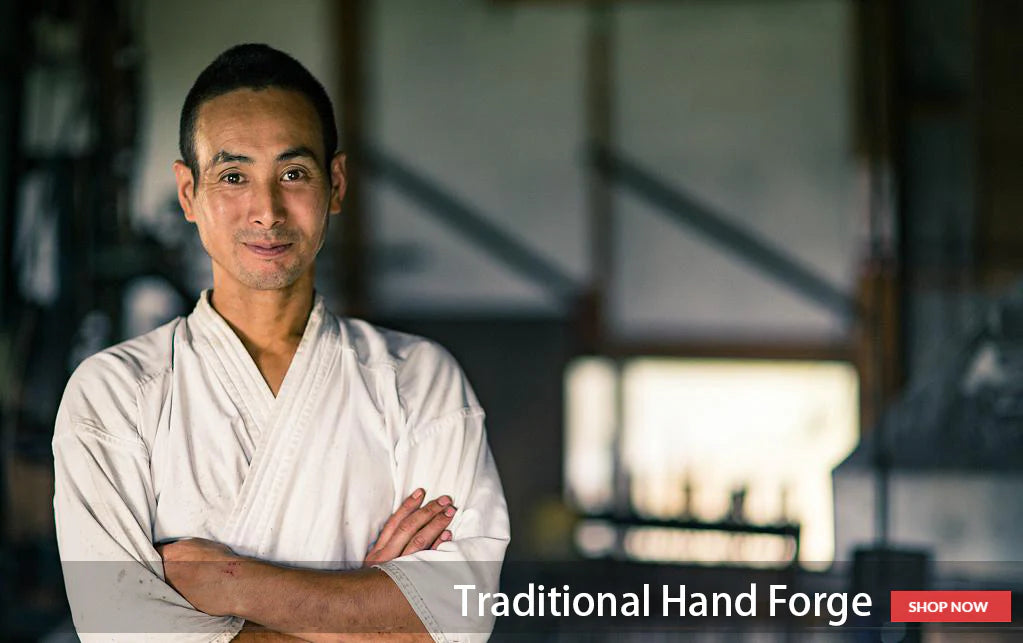Top Quality Katana Swords for Sale - Hand-Forged Samurai Blades
Katana is a widely known Japanese sword with a significant and emblazoned history with samurai. It is complete with a razor-sharp and elegantly curved blade. We offer the finest crafted alternative to Japanese Katana swords, forged meticulously and designed with artistry and precision.


Free customs charges
UK Legal Purchase Our Katana
All the katanas we offer for sale are meticulously hand-polished and forged using traditional techniques. This craftsmanship ensures that our samurai swords are legally purchasable in the UK without a license, in accordance with the legal exception introduced in August 2008.
-
Japanese Samurai Clay Tempered Carbon Steel Sharp Blade Handmade Full Tang Katana
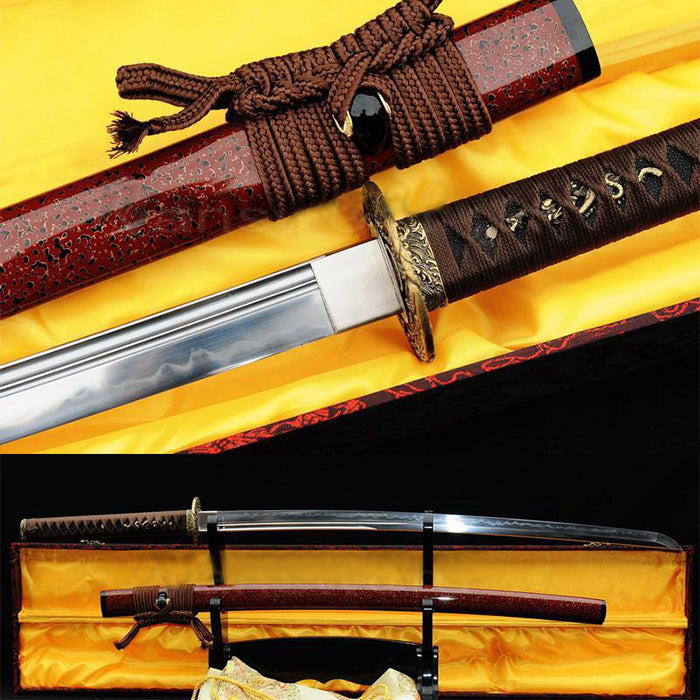
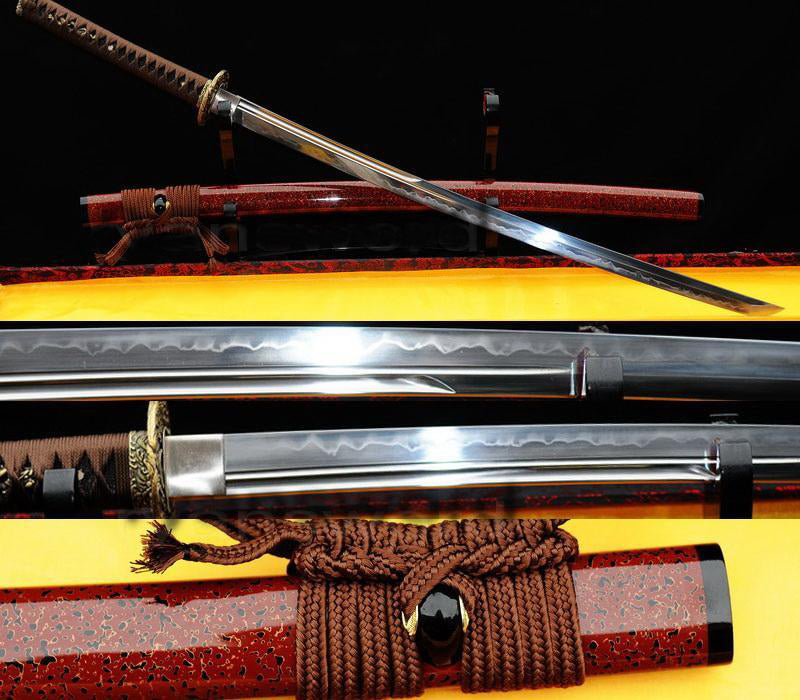 Japanese Samurai Clay Tempered Carbon Steel Sharp Blade Handmade Full Tang Katana
Japanese Samurai Clay Tempered Carbon Steel Sharp Blade Handmade Full Tang Katana- Regular price
-
£189.69 - Regular price
-
- Sale price
-
£189.69
-
Japanese Samurai Battle Ready Dragon Sword Katana Clay Tempered Full Tang Blade
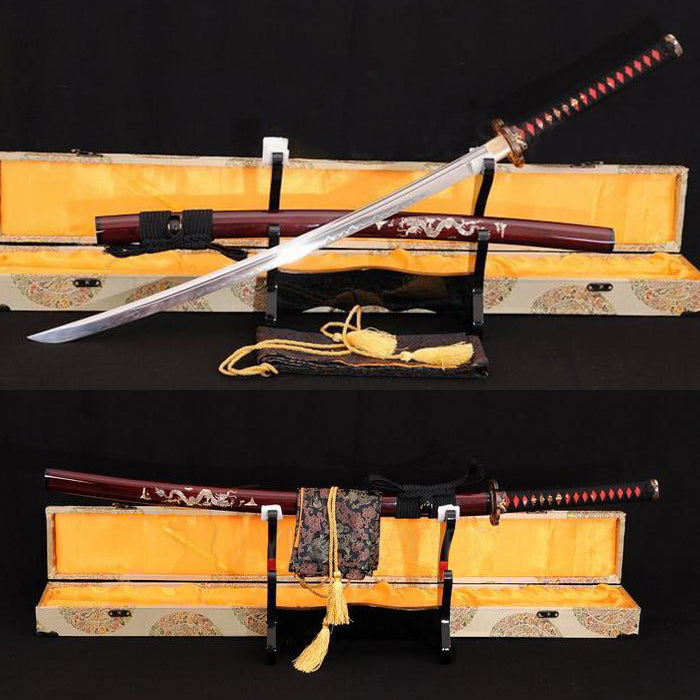
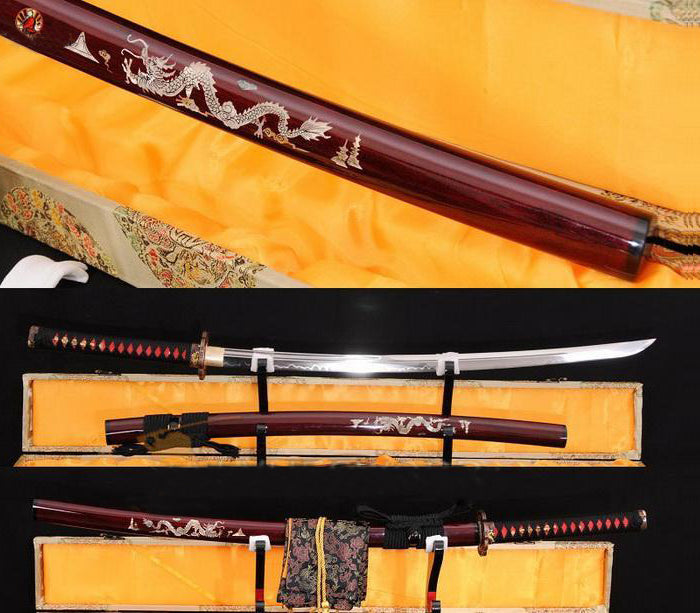 Japanese Samurai Battle Ready Dragon Sword Katana Clay Tempered Full Tang Blade
Japanese Samurai Battle Ready Dragon Sword Katana Clay Tempered Full Tang Blade- Regular price
-
£294.59 - Regular price
-
- Sale price
-
£294.59
-
Hand Forged Blade Full Tang Sharp Japanese Samurai Sword Tanto
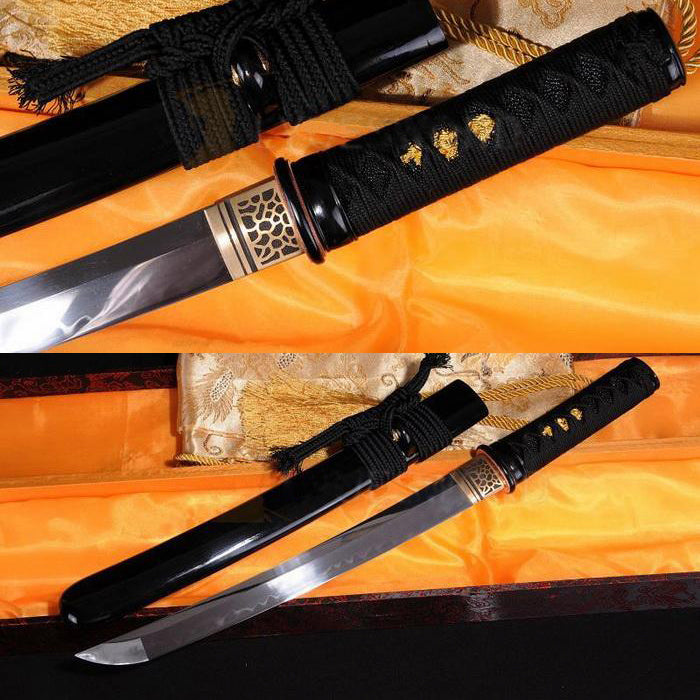
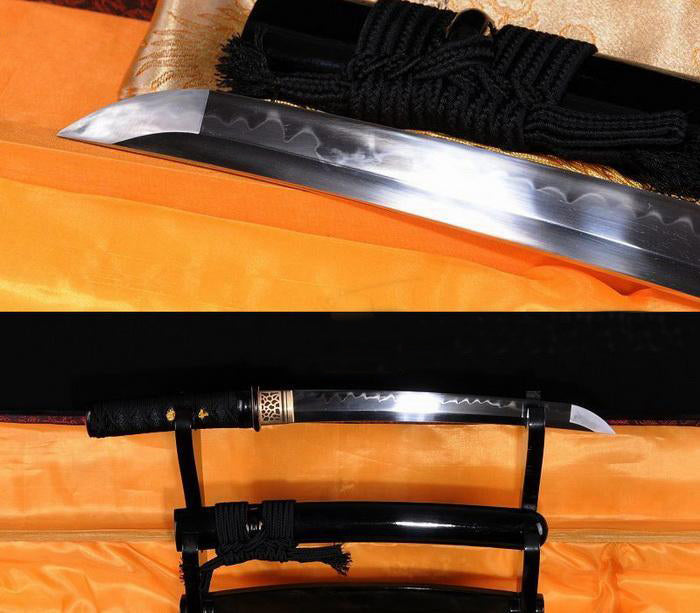 Hand Forged Blade Full Tang Sharp Japanese Samurai Sword Tanto
Hand Forged Blade Full Tang Sharp Japanese Samurai Sword Tanto- Regular price
-
£159.99 - Regular price
-
- Sale price
-
£159.99
-
Razor Sharp Folded Steel Clay Tempered Japanese Sword Katana Rosewood Saya
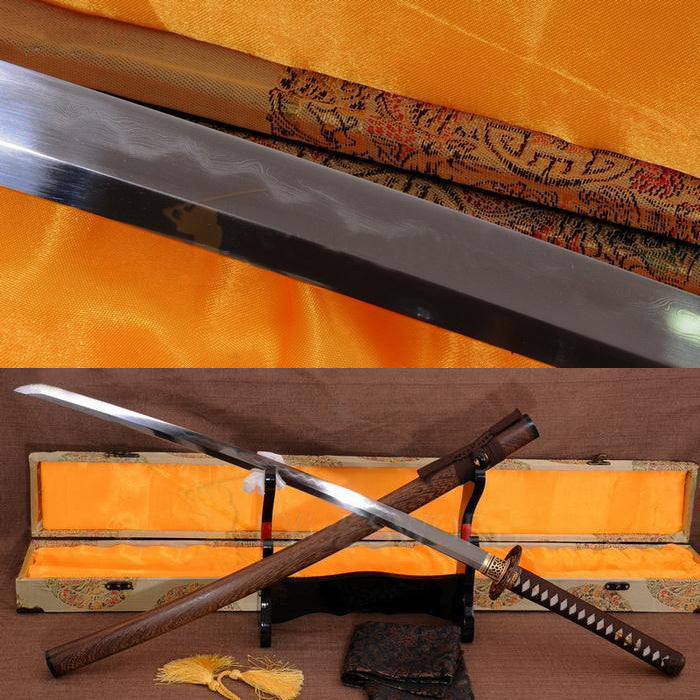
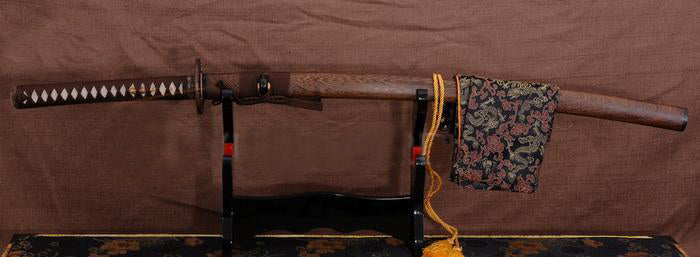 Razor Sharp Folded Steel Clay Tempered Japanese Sword Katana Rosewood Saya
Razor Sharp Folded Steel Clay Tempered Japanese Sword Katana Rosewood Saya- Regular price
-
£324.99 - Regular price
-
- Sale price
-
£324.99
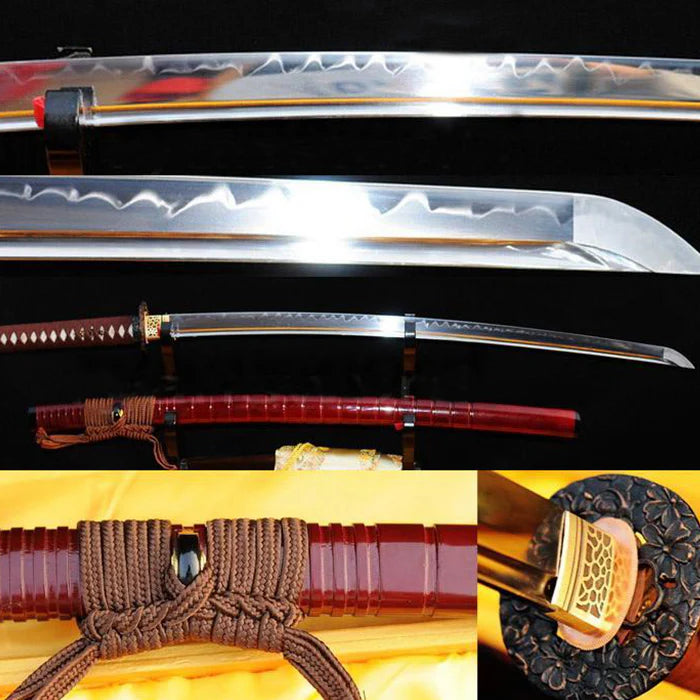

Own a real samurai sword
Japanese Samurai Swords For Sale
The katana is a famous Japanese sword associated with the samurai. It showcases history and expert craftsmanship as it transformed from the older tachi into a more practical weapon.
Katana swords are forged with outstanding hand-folded steel and shaped using traditional techniques that ensure the creation of strong and sharp blades. While beautiful, katana swords are also fully functional. When selecting a katana sword, body size and weight of the blade, as well as the purpose for use, should all be considered.
Appropriate katanas make a difference in performance and enjoyment, whether used for martial arts or collecting. Samurai swords are still revered worldwide and maintained as a treasure of deep cultural significance.
-
Handmade Samurai Katana Swords High Carbon Steel Black
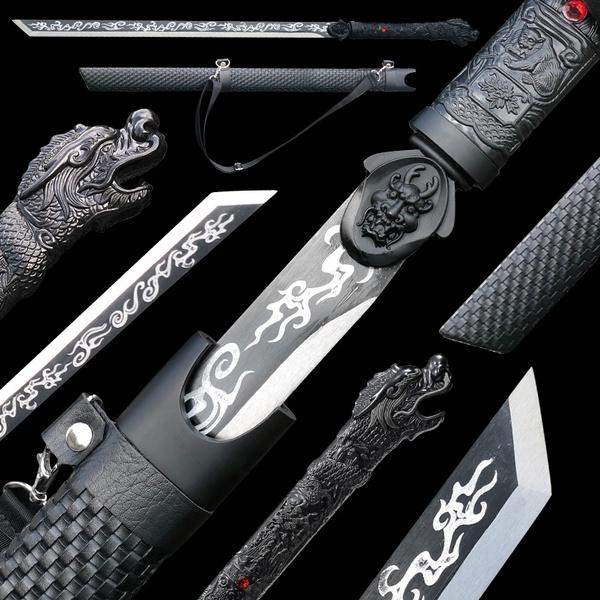 Handmade Samurai Katana Swords High Carbon Steel Black
Handmade Samurai Katana Swords High Carbon Steel Black- Regular price
-
£149.99 - Regular price
-
- Sale price
-
£149.99
-
Handmade High Carbon Steel Samurai Sword Saya White Japanese Katana Swords
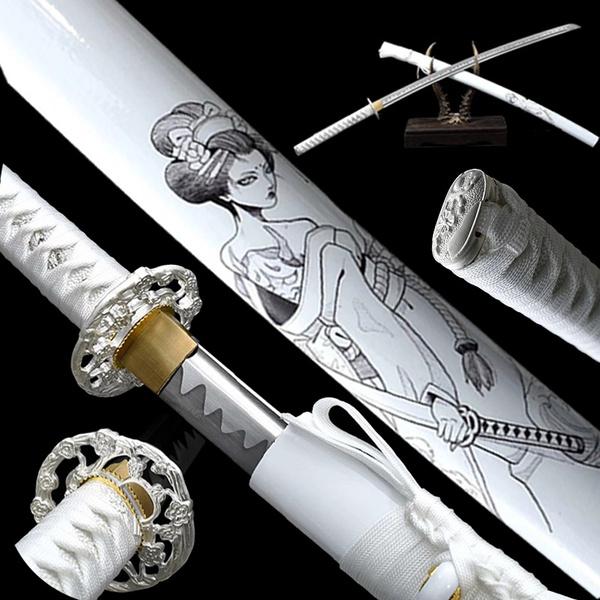 Handmade High Carbon Steel Samurai Sword Saya White Japanese Katana Swords
Handmade High Carbon Steel Samurai Sword Saya White Japanese Katana Swords- Regular price
-
£149.99 - Regular price
-
- Sale price
-
£149.99
-
Handmade Demon Slayer Sword Rengoku Tanjirou Real Metal Full Tang Cosplay Replica
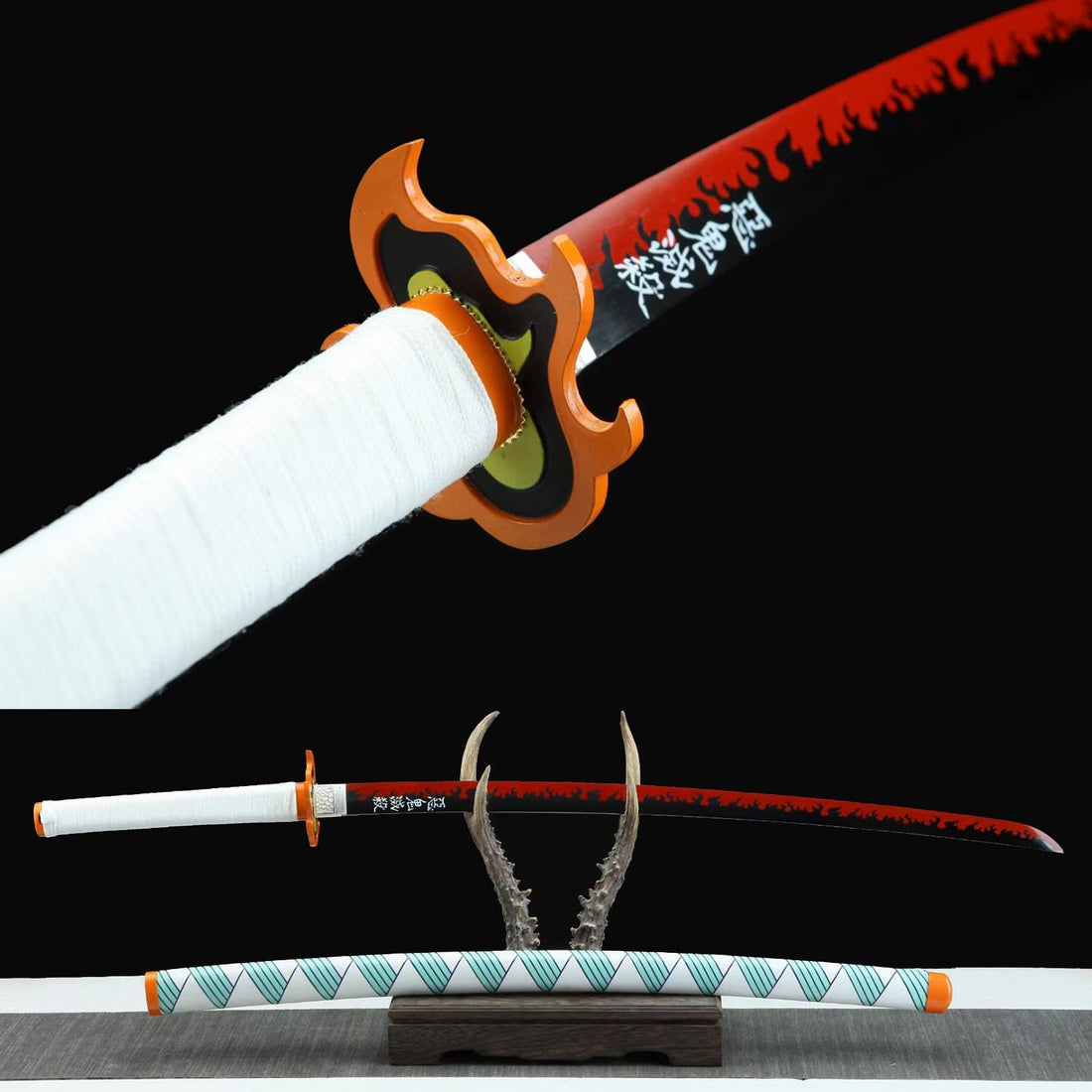 Handmade Demon Slayer Sword Rengoku Tanjirou Real Metal Full Tang Cosplay Replica
Handmade Demon Slayer Sword Rengoku Tanjirou Real Metal Full Tang Cosplay Replica- Regular price
-
£169.99 - Regular price
-
- Sale price
-
£169.99
-
Japanese Samurai Clay Tempered Carbon Steel Sharp Blade Handmade Full Tang Katana
 Japanese Samurai Clay Tempered Carbon Steel Sharp Blade Handmade Full Tang Katana
Japanese Samurai Clay Tempered Carbon Steel Sharp Blade Handmade Full Tang Katana- Regular price
-
£189.69 - Regular price
-
- Sale price
-
£189.69
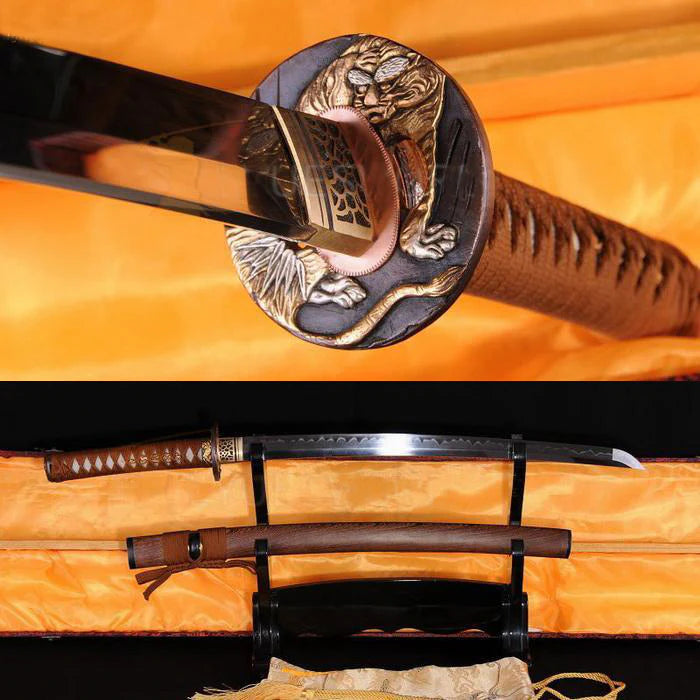

Katana,Wakizashi, Tanto, and Odachi
A Wakizashi is a Japanese sword that is shorter in length than other swords. An example of such a sword would be a wakizash,i ranging from 30 to 60 centimeters. Samurai warriors used to carry it alongside their katana as part of the pair daisho since it represented the social rank and status of the samurai. Unlike the katana, its shorter length made it easier for close-range indoor battles. Furthermore, due to the ritual act of suicide known as seppuku, it also served as a symbol of sacrifice.
Tanto is usually a dagger with a blade length of a maximum of 30 centimeters. Due to this length, both women and samurai were able to carry the tanto with them to combat. Unlike the tanto, the tanto was not used extensively as it was only effective for piercing.
The odachi is a massive Japanese sword known for its impressive length and is often associated with samurai warriors. Its design emphasizes reach and power, making it a formidable weapon in battle.
Manga often features the katana, a renowned Japanese Manga Katana sword with a sharp, curved blade that symbolizes the samurai's honor and skill. Its depiction highlights the katana's cultural and historical significance.
Let customers speak for us
Frequently Asked Katana Questions FAQs
What makes high-carbon steel ideal for a sharp, curved katana blade?
The most suitable type of steel used in sharp blades is high carbon steel due to its properties of edge retention and sharpness, which are regionally in demand. It also has the right proportions of ductile and hardness. This enables the blade to be useful practically as well as for collection.
How do I determine the right blade length for my katana?
You can find the correct samurai sword blade length by measuring either from your torso or the chest down to the ground, or from outstretched arms to the floor. For people 180 centimeters tall, a blade length between 74-75 centimeters is optimal ,while average height swordsmen are recommended to have it around 70 centimeters.
What is the significance of the Hamon line on a katana sword blade?
The Hamon line displays a katana blade’s hardness and the skill of the artisan who forged it. It contributes to the appeal of the katana and at the same time, reinforces how strong and sharp the blade is.
How should I maintain my high-carbon steel katana?
For proper maintenance of your high-carbon steel, sharp katana, diligently apply a thin layer of sword oil to stave off rust. Handy, clean the blade after using the sword to prevent stains. Also, preventative maintenance like regular inspections and dusting the blade will go a long way towards preventing rust patches.
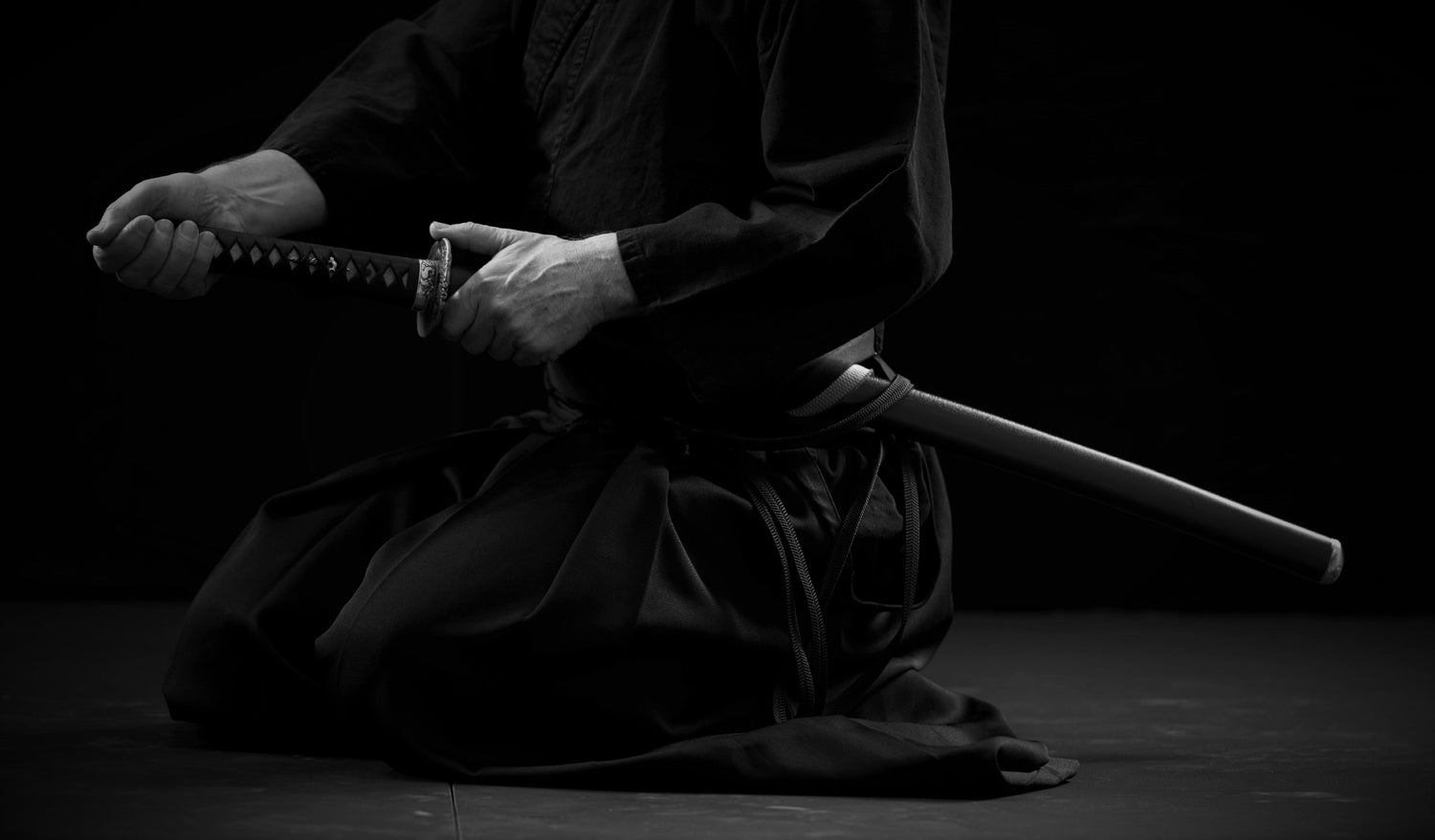
The Legacy of the Katana Sword
The katana is more than a sword—it’s a symbol of the samurai’s soul and values. Samurai swords like the katana were not just tools for battle but symbols of honor and high status. The katana’s history began during the Muromachi period (1336–1573), when it evolved from the older curved tachi to a more practical design for close combat. This change reflected the shifting needs of warriors and the growing importance of a sharp, reliable blade.
By the early Edo period (1603–1868), the katana had become central to samurai life under the Tokugawa shogunate. It was worn daily, representing the samurai’s duty, pride, and discipline. Samurai swords were crafted with incredible care, and each blade was shaped to deliver swift, clean cuts in combat. The katana's curved design made it easier to draw quickly and strike effectively, especially in fast, one-on-one fights.
In the late Edo period, the katana became more than just a weapon—it was a part of ceremonies and passed down as family heirlooms. The sharp edge of the blade, combined with its elegant shape, showed the perfect balance of beauty and power. These swords were seen as extensions of the samurai, treated with deep respect.
Today, the katana is still honored as a masterpiece of Japanese culture. Its sharp blade and rich history continue to inspire admiration and preserve the legacy of the samurai.
The Katana is a famous Japanese sword known for its sharp, curved blade and the history of the samurai associated with it. We’re offering the finest forged-by-hand Japanese samurai sword alternatives made with tradition, accuracy, and intention.
Traditional Craftsmanship of Katana Swords
The Edo period marked the height of artistry associated with forging the katana sword, an indicator of the masterful techniques used in different eras. Forging begins with a special furnace called ‘Tatara’ where charcoal and iron sand are burned for days to obtain Tamahagane steel. This steel is then heated and folded over itself numerous times to create a blade with thousands of layers.
The katana sword undergoes tempering, which involves rapid cooling. This restructuring of the sword on the molecular level improves hardness while creating the Hamon line distinguishing feature. Equally as meticulous, polishing the sword takes several months, starting with rough files and ending with fine paper to bring aesthetic appeal to the edge of the sword.
Painstaking attention and effort give every blade a beautiful structure, marking the sword as a weapon and a work of art. The value of handmade katanas crafted using customary methods makes them sought after by collectors and martial artists due to their immense cultural and historical significance.
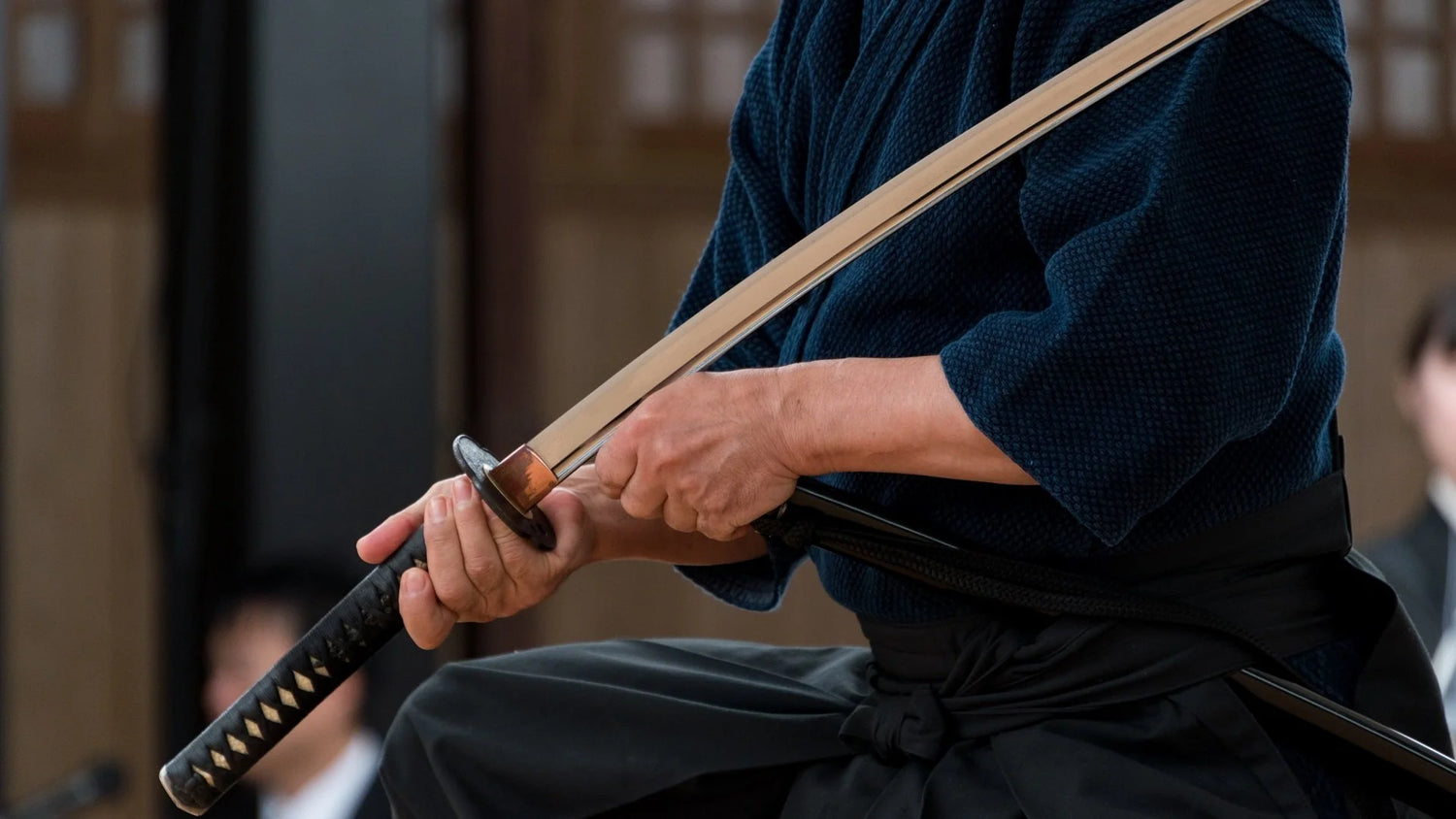
Parts of a Katana Sword
A katana samurai sword comprises several parts that determine its functionality and aesthetics. The blade, measuring just under two shaku, or around 70cm long, includes a slight curve. Its single sharp edge is ideal for cutting. Both the smooth curve of the blade’s shinogi and the ridge bolster its beauty and strength. The sharp edge facing outward is referred to as ha, while the reverse edge possesses softer steel, thus aiding balance and decreasing the risk of breakage during use.
The guard, or tsuba, rests on the handle and sheath interface. Additionally, it offers balance to the sword while protecting the user’s hand. The handle, known as tsuka, is overlaid with silk cord, or tsuka-ito, after being wrapped with ray skin (samé). During combat, this wrapping ensures a strong grip for the user. The blade is secured tightly within the handle by small pegs called mekugi.
The saya, also scabbard, is often constructed of lacquered wood and protects the sharp blade when not in action. A metal collar, habaki hold the blade’s base, that also helps keep the katana firmly in the saya. Combined, these parts form the beauty and functionality of the katana.
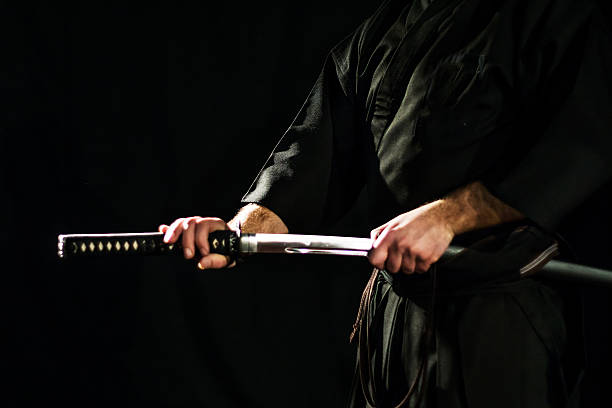
Authentic Japanese Swords for Collectors
Crafted with intricate detail, authentic Japanese swords have a fantastic history and are prized by collectors. Modern and antique samurai swords alike display the pride and culture of Japan. These swords served not only for combat cutting ability; they were also a symbol of honor, bravery, and the spirit of the samurai. Every sword carries tales from the past and is one of a kind.
A samurai katana is an exquisite collectible, representing an enormous chunk of history. The craftsmen who produced these blades poured in a great deal of time, skill, and meticulous attention to detail. Each katana possesses a uniquely sharp edge, robust design, and stunning aesthetic. For countless individuals, possessing a samurai sword is a bridge to centuries of tradition and tremendous respect.
More than just a weapon, a finely crafted sword transforms into a striking representation of the samurai’s impact and legacy. It is no secret that these meticulously crafted katanas are valuable treasures and symbols of Japan’s rich culture.
Katana Swords Summary
In conclusion, the sharp katana sword remains a true testament to the craftsmanship of Japan's history and cultural heritage. From its origin in the Muromachi period to its significance in the samurai's life during the Edo period, the katana has come to symbolize honor, discipline, and skill. Its construction is made from high-quality materials, and Akabane forging katanas from high carbon steel makes the katana both powerful and beautiful.
Owning a katana remains a treasured connection to Japan's heritage whether its is for collecting sake or practicing martial arts. Understanding how to choose, maintain and respect a katana broadens its value over time. Beyond being a sword, a katana is a work of art, a relic of history and a tradition forged in time. The legacy it carries is the indomitable spirit of the samurai infused with the beauty of Japanese sword-making.
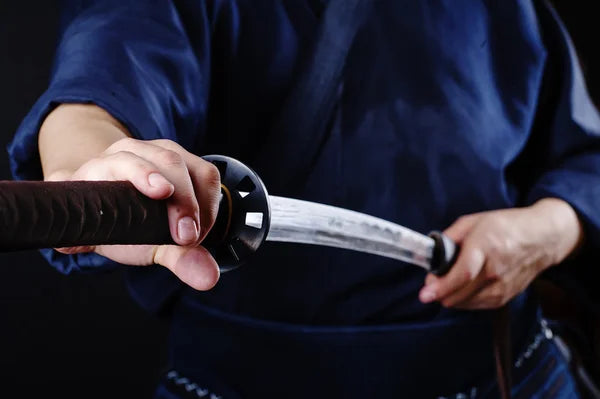
The Art of Japanese Swordsmanship
The Japanese katana is fundamental to Japanese martial arts such as Iaido and Kendo. In Iaido, students learn to draw the sword and counterattack with smooth, controlled motions. These actions, known as kata, are performed against unnamed foes. Iaido stresses concentration and rapid response. Those who practice Iaido, or iaidoka, often practice with a wieldy iaitō, a blunt-edged sword, for safety.
Kendo is another widely enjoyed martial art where competitors fight with bamboo swords. It is very fast and thrilling, teaching students timing, speed, and strategy. Many practitioners engage in both Iaido and Kendo to help with mastering katana sword techniques.
Practicing with the katana teaches much more than sword fighting; it builds discipline, elevated focus, and respect for traditions. These martial arts preserve the spirit of the samurai. For countless people, the katana transcends being a weapon; it symbolizes Japan’s culture and history.
Modern Uses of the Katana
Even today, the importance of a good-quality, sharp katana sword is evident in contemporary martial arts practices. In Battodo and Tameshigiri, cutting practice practitioners focus on severing rolled tatami mats with a katana to gauge the precision of their skills and the sharpness of the blade. Katanas Performance Line is specially designed for these types of training, demonstrating the sword's value in controlled settings.
Many Japanese people display sharp katana swords in their houses beyond martial arts as a means of respecting the Japanese culture. The katana’s aesthetic form and intricate artistry make it stunning as a piece of artwork and immensely valuable as a symbol.
The katana commands admiration, whether for practice or decor. Its modern form reflects the fusion of craftsmanship, tradition, and practicality. As a katana, it is a weapon and cultural emblem that connects the past and the present, highlighting the unforgettable impact of the samurai.


